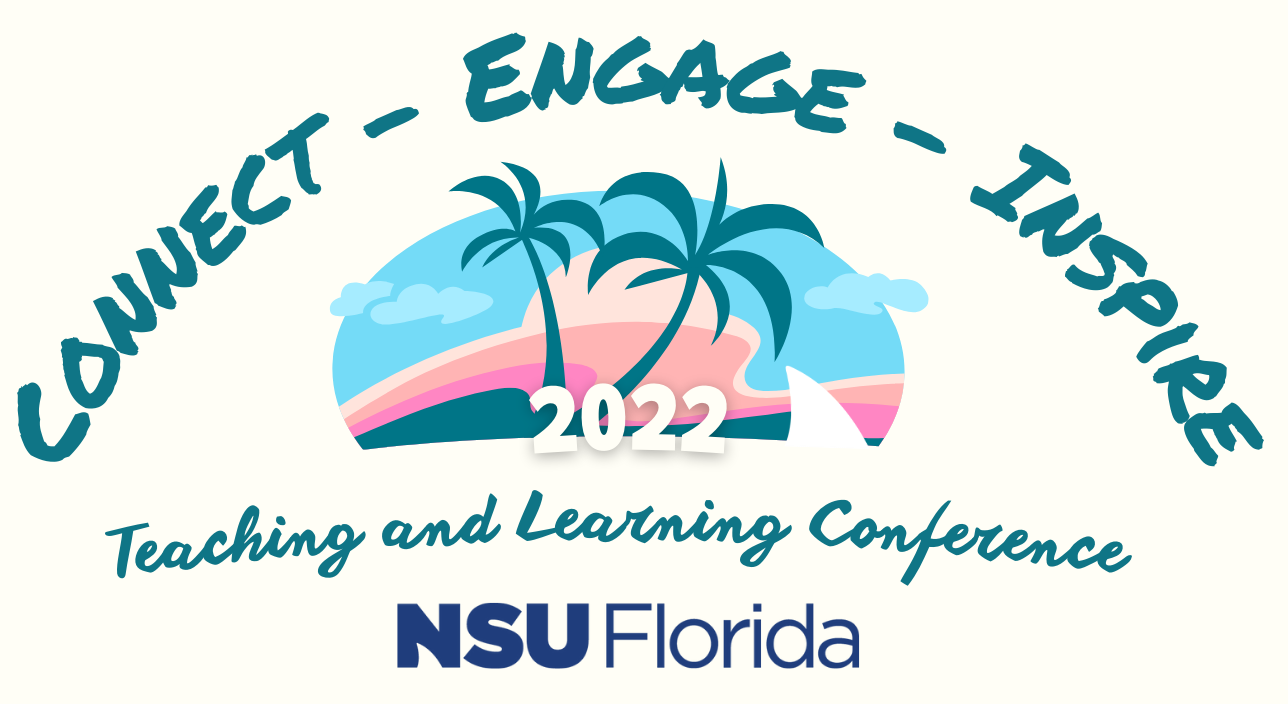Start Date
3-11-2022 9:35 AM
End Date
3-11-2022 10:20 AM
Keywords
Active Learning Strategies, Online Teaching/Canvas, Student Engagement Strategies
Abstract
Due to the COVID-19 pandemic, we found ourselves forced to switch to online learning in a hurry to ensure instructional continuity. As we faced abrupt change by meeting learning needs through rushed fixes, namely distant learning online using a cloud-based video conferencing solution, we realized that some of those temporary changes had tremendous potential for becoming permanent.
As we emerge from the pandemic, one of those temporary changes is here to stay. Zoom brought unexpected value to our daily learning activities and made us realize that this type of cloud-based video conferencing solution featuring interactive tools will likely become a staple of the New-Normal. Zoom became our catalyst to rethink previous classroom models and prompted us to further consider keeping what worked and improving what didn’t. This unique opportunity to embrace change has also allowed us to solve some old classroom challenges, such as the prevalent concern with curbing cheating and implementing authentic assessment strategies.
Beyond the classroom, looking into the immediate future, unplanned advantages of those Zoom virtual meetings allowed us to prepare students for the new post-pandemic economy, where many job interviews involve virtual meetings. The skills learned in our Zoom classrooms also allow our students to participate efficiently in virtual job interviews, and to engage in a remote or hybrid workforce. Moreover, Zoom provides a solid stepping-stone for upcoming technological innovations such as “Meta” (formerly “Facebook”), a virtual integrated metaverse that will allow users to engage remotely in immersive online experiences, built with inclusivity from the start.
Learning Outcomes
- Identify benefits of learning activities and assessments conducted via Zoom, and will enumerate baseline or entry-level Zoom behaviors needed to engage in a Zoom classroom session efficiently.
- List specific teaching and learning strategies that we can apply in the virtual classroom (but can’t apply in the face-to-face classroom), and then categorize these under one of four categories: “individual”; “in-the-classroom”; “institutional”; or “international” strategies or actions.
- Design and explain either a learning activity or an assessment done in Zoom for a course delivered in any modality (face-to-face, hybrid, or fully online) and will specify how Zoom can improve or enhance the learning activity or assessment.
- Explain how Zoom can help to curb cheating and/or replace proctoring in their assessments.
- Brainstorm how the previously listed points in the Learning Objectives can be enhanced in the near-future or taken to the next level.
Included in
Cloud-based Video-conferencing is Here to Stay (Zoom, or similar): Implementing Authentic Assessment and Curbing Cheating Without the Need for Proctoring
Room 3: Technology-Enhanced Teaching & Learning
Due to the COVID-19 pandemic, we found ourselves forced to switch to online learning in a hurry to ensure instructional continuity. As we faced abrupt change by meeting learning needs through rushed fixes, namely distant learning online using a cloud-based video conferencing solution, we realized that some of those temporary changes had tremendous potential for becoming permanent.
As we emerge from the pandemic, one of those temporary changes is here to stay. Zoom brought unexpected value to our daily learning activities and made us realize that this type of cloud-based video conferencing solution featuring interactive tools will likely become a staple of the New-Normal. Zoom became our catalyst to rethink previous classroom models and prompted us to further consider keeping what worked and improving what didn’t. This unique opportunity to embrace change has also allowed us to solve some old classroom challenges, such as the prevalent concern with curbing cheating and implementing authentic assessment strategies.
Beyond the classroom, looking into the immediate future, unplanned advantages of those Zoom virtual meetings allowed us to prepare students for the new post-pandemic economy, where many job interviews involve virtual meetings. The skills learned in our Zoom classrooms also allow our students to participate efficiently in virtual job interviews, and to engage in a remote or hybrid workforce. Moreover, Zoom provides a solid stepping-stone for upcoming technological innovations such as “Meta” (formerly “Facebook”), a virtual integrated metaverse that will allow users to engage remotely in immersive online experiences, built with inclusivity from the start.
Learning Outcomes
- Identify benefits of learning activities and assessments conducted via Zoom, and will enumerate baseline or entry-level Zoom behaviors needed to engage in a Zoom classroom session efficiently.
- List specific teaching and learning strategies that we can apply in the virtual classroom (but can’t apply in the face-to-face classroom), and then categorize these under one of four categories: “individual”; “in-the-classroom”; “institutional”; or “international” strategies or actions.
- Design and explain either a learning activity or an assessment done in Zoom for a course delivered in any modality (face-to-face, hybrid, or fully online) and will specify how Zoom can improve or enhance the learning activity or assessment.
- Explain how Zoom can help to curb cheating and/or replace proctoring in their assessments.
- Brainstorm how the previously listed points in the Learning Objectives can be enhanced in the near-future or taken to the next level.


